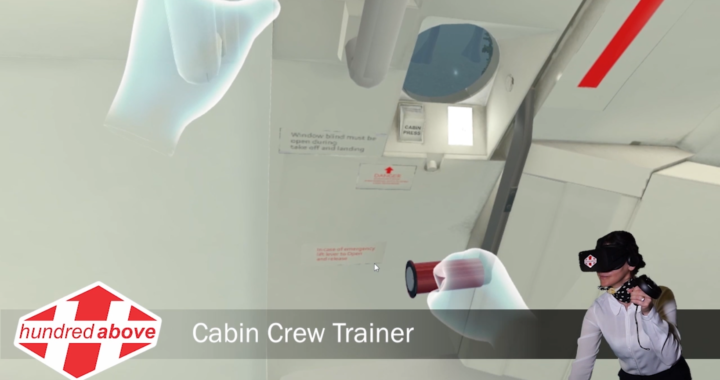Through the use of digital technology, virtual realities can be designed precisely for human interaction for very specific reasons to create experiences not otherwise possible. An artificial reality can be designed to enable experiential learning, scenario-based learning, social learning, workplace training, and more.
Virtual reality is a three-dimensional, computer-generated representation of physical worlds. These worlds are immersive, and users can interact with them as if they are real. A variety of Virtual Reality devices are available on the market, ranging from inexpensive cardboard-based devices that work with a smartphone to expensive, professional-grade headsets.
In the aviation industry, companies use Virtual Reality to allow their employees to practice dealing with real-world scenarios. For example, procedural training for pilots and cabin crew. Here are some other advantages of using Virtual Reality in training:
Makes learning more visual
Humans are intensely visual creatures. 90% of all the information that is sent to our brains is visual in nature, and 93% of all our communication is visual, too. With Virtual Reality, training becomes more visual as the subject matter is presented in a visually stunning, 3D format that most people will find far more appealing than regular old text.
Makes better learning more affordable
Until a few years ago, virtual reality training was the sole domain of high-end commercial, government and military applications. Compare the price of those models with the price of Oculus Rift and HTC Vive, and the progress being made should be readily apparent. With falling hardware prices, more developers are also turning to making Virtual Reality specific content, meaning we will soon have a flourishing eco-system of apps that will make training more fun and engaging.
Virtual Reality makes learning safer
Workplace training accidents are, unfortunately, common occurrences in many industries and in sectors such as manufacturing, energy and defense, they may even be fatal. As novices are the most likely to make mistakes, they need a safe place to practice their skills until they are confident in them and Virtual Reality provides just that. By letting your employees practice in a VR 3D environment, they can iron out the kinks in their skills, and start the job with a near-perfect command.
Practice makes perfect
Workers with difficult jobs can sharpen their skills without worrying about real-world consequences.
Accelerated learning
Because Virtual Reality is so immersive and compelling, learners absorb information faster and retain what they have learned longer. Memory formation is linked to emotional response, and Virtual Reality is an emotionally charged experience.
Reduced pressure and enhanced creativity
Because all training is virtual, workers can take risks they usually wouldn’t take or pursue creative, high-risk solutions to problems.
These are a few of the features that make Virtual Reality training so much better than regular old instructional based training. As the technology evolves, we will see more immersive training solutions emerge that will allow people to train faster, better and cheaper than ever before.
